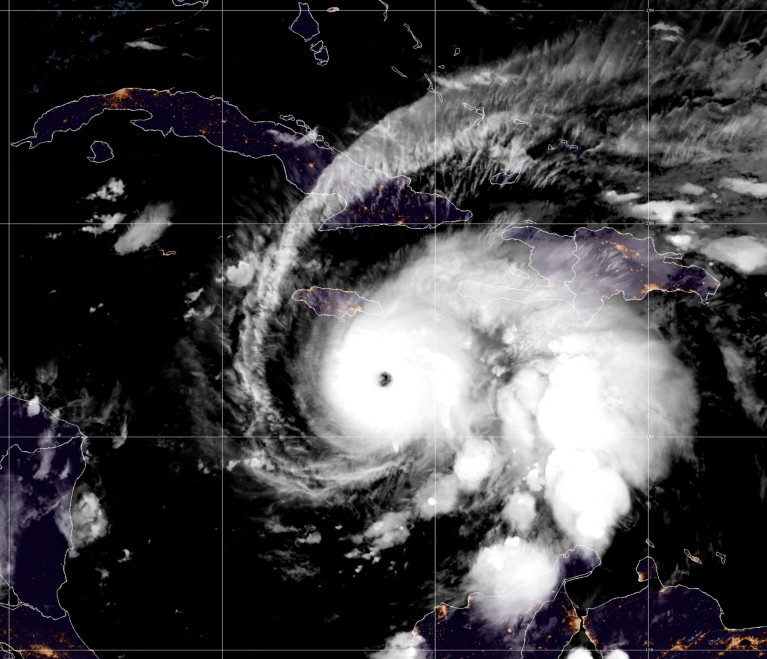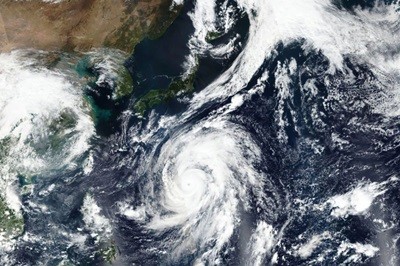
Hurricane Melissa was expected to unleash as much as 75 centimetres of rain on some parts of Jamaica. Credit: NOAA/Getty
As Hurricane Melissa exploded into a category-5 storm over the weekend, scientists forecast its trajectory and growth with a powerful new tool — helping to inform warnings to Jamaica and other nations that the storm has devasted. That tool, an artificial intelligence (AI) forecast model developed by Google DeepMind, is successfully predicting how Melissa and other dangerous storms arise and evolve.
The model is being used this year by the US National Hurricane Center (NHC), a leading source of hurricane information in the region, in real time for the first time. It is a machine-learning tool specific to hurricanes and a step beyond earlier models developed by London-based Google DeepMind that can forecast weather conditions quickly and accurately.
“I’m not sure I’ve seen such good results from a new model so fast,” says James Franklin, a retired atmospheric scientist who was formerly the branch chief of the hurricane specialist unit at the NHC in Miami, Florida.
Compared with other hurricane models used by the NHC, the DeepMind model is “definitely toward the front of the pack if not at the front of the pack”, says Brian McNoldy, a hurricane researcher at the University of Miami. “It’s pretty impressive.”
A brewing storm
DeepMind’s developers trained the model on two data sets: a large database of global weather observations and a smaller database of observations that included nearly 5,000 cyclones from the past 45 years1. Adding that second, cyclone-specific database might be the reason that the DeepMind model performs better on hurricane forecasts than do other AI-based forecast models, Franklin says. In particular, scientists have long struggled to improve their forecasts of a storm’s intensity — but the DeepMind model seems to capture this well.
DeepMind AI weather forecaster beats world-class system
As early as 21 October — long before it was obvious that Melissa would be a monster storm — the model predicted a 50–60% chance that it would reach category 5, the DeepMind team says. On 23 October the model estimated that the storm had an 80% or higher chance of reaching this most powerful category. The following day, NHC forecasters cited the DeepMind model as they reported “a distinct possibility that Melissa could become a Category 5 hurricane”.
Still, the DeepMind team cautions against reading too much into the predictions of a single storm: “We are happy to have been able to contribute useful guidance to NHC, but we caution against representing the model’s capabilities based on a single case or metric,” says Ferran Alet, a research scientist at DeepMind.
The NHC began using the DeepMind model at the start of the Atlantic hurricane season in June. For the 13 named storms that have formed so far, the DeepMind model has generally performed well in predicting both their tracks and intensities, McNoldy says. “To have something that just came out in June already be something we’re talking about as being front of the pack — that’s extraordinary,” he says.
Curtailed flights
The NHC continues to operate even though the US government is shut down. Most federal employees — including those flying into the storm on ‘hurricane hunter’ aircraft to gather measurements — are not being paid.



